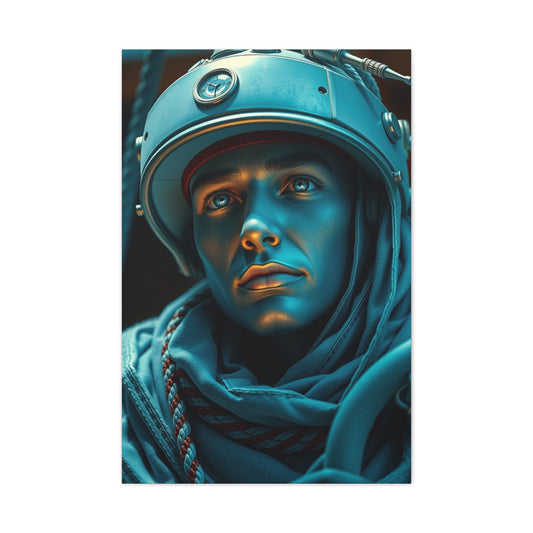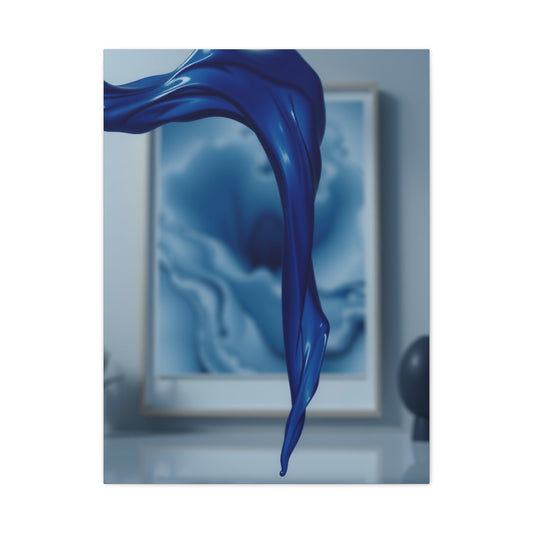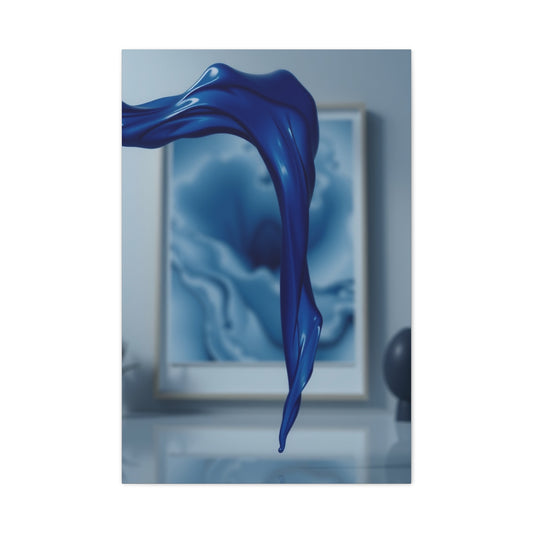Photoshop is packed with powerful tools, but sometimes the simplest ones can offer surprising utility when used correctly. The Magic Wand Tool is one such feature. While many users bypass it in favor of more dynamic tools, it excels in specific scenarios such as selecting solid backgrounds or isolating uniformly colored elements. Whether you're working on product images, digital artwork, or composite photography, understanding how to use the Magic Wand Tool efficiently can save you time and effort.
Introduction to the Magic Wand Tool
The Magic Wand Tool is a color-based selection tool in Photoshop. It allows you to click on a pixel in your image, and Photoshop will automatically select all other pixels within a similar color range. This can be extremely useful when you want to separate an object from a solid-color background or when you need to make fast edits to areas of consistent tone.
Rather than analyzing edges or textures like the Quick Selection Tool or the Object Selection Tool, the Magic Wand focuses entirely on the color values. This means it excels in situations where the area you're targeting has little variation in hue or brightness.
When and Why to Use the Magic Wand Tool
This tool is best used when your image has large areas of similar or flat color. For example, you might use it to replace a white background in a product photo, adjust a blue sky in a landscape image, or apply effects to specific parts of a graphic that share a common color. It’s less effective when used on busy images with gradients, shadows, or complex textures, as the tool may struggle to make accurate distinctions.
Still, it’s a favorite among many editors for certain types of batch work and initial selections that can later be refined. Combined with layer masking, adjustment layers, and the Select and Mask workspace, it becomes a strategic first step in more complex workflows.
Accessing the Magic Wand Tool
To locate the Magic Wand Tool, open Photoshop and refer to the vertical toolbar on the left side of your screen. If the tool is not visible, it may be grouped with the Quick Selection Tool. In that case, right-click the icon and select Magic Wand Tool from the dropdown menu. Alternatively, pressing the W key on your keyboard will activate either the Magic Wand or Quick Selection Tool, depending on which one was last used.
|
Related Catagories: |
In-Depth Guide to Configuring Magic Wand Tool Settings in Photoshop
Photoshop offers an arsenal of tools for selective editing, and one of the simplest yet surprisingly powerful among them is the Magic Wand Tool. Despite its basic appearance, the Magic Wand Tool can perform remarkably precise selections when used with the right configuration. Central to mastering this tool is understanding how its core settings affect selection behavior. The Options bar located at the top of the Photoshop interface provides several key parameters that influence the accuracy and behavior of your selections. Whether you are isolating a subject from a background or refining color-based selections, knowing how to adjust these settings is essential to achieving clean, professional results.
Why Configuration Matters in the Magic Wand Tool
The Magic Wand Tool relies solely on pixel color and tone to generate a selection. This means it evaluates the clicked point and identifies other pixels that closely resemble it in color and brightness. However, this behavior is only as effective as the settings behind it. The configuration options allow you to control how sensitive the selection process is, how wide its reach should be, and whether additional conditions such as adjacency or edge smoothing should apply. When properly configured, this tool can perform tasks that would otherwise require tedious manual selections, particularly in images with large regions of uniform or near-uniform color.
Tolerance: Fine-Tuning the Color Range
Tolerance is arguably the most critical setting for determining the range of colors included in a selection. It acts as a sensitivity control, adjusting how far from the clicked color Photoshop will go to include other colors.
When set to a low value, such as 5 or 10, the tool becomes very selective. Only colors that are extremely similar to the pixel you clicked will be included in the selection. This is ideal for images where precision is necessary, such as selecting an object with subtle color shifts or separating fine edges from a complex background.
On the other hand, a higher tolerance, such as 50 or even 100, will make the tool far more liberal in its selection. It will include a much broader range of tones, which can be useful when selecting solid backgrounds that are affected by gradients or soft shadows. However, using high tolerance values may result in selecting parts of the image you didn’t intend to include, particularly in complex compositions with overlapping color schemes.
The default value is 32, which works well for general-purpose selection but rarely delivers the exact outcome on the first attempt. The key to using Tolerance effectively is experimentation. After each click, you can evaluate the selection and adjust the value accordingly. If the selection is too tight, increase the number; if it’s too loose, bring it down.
Contiguous: Controlling Selection Spread
Contiguous is a setting that determines whether Photoshop limits its selection to adjacent pixels or includes matching pixels throughout the entire image. This setting plays a pivotal role depending on the kind of image you’re working with.
With Contiguous enabled, the tool will only select matching colors that are touching each other. This is useful when you want to isolate an object or background that is uninterrupted by other design elements. For example, if you're trying to select a uniform blue sky that stretches across the image, keeping Contiguous checked ensures that only the sky area is selected, excluding isolated blue tones elsewhere in the image that may resemble the sky but are part of different elements.
When Contiguous is turned off, the Magic Wand Tool selects all pixels across the active layer that fall within the tolerance range, regardless of their location. This can be particularly helpful for batch selections or graphics that have multiple areas of the same color, like patterned backgrounds, scattered design elements, or recurring icons. However, caution is advised in more detailed or layered compositions, as you may unintentionally select more than intended.
Using Contiguous in tandem with Tolerance provides a powerful mechanism for defining very specific or very broad selection scopes, making the Magic Wand far more flexible than its simplicity suggests.
Anti-Alias: Ensuring Seamless Edge Transitions
The Anti-Alias feature in the Magic Wand Tool addresses one of the most common problems with color-based selections: harsh, jagged edges. When activated, Anti-Alias applies a subtle smoothing effect to the edge of the selection, producing a more natural transition between selected and unselected pixels. This is especially important when the selection will be extracted, blended into a new background, or edited with adjustments that would exaggerate rough edges.
For instance, when isolating a person or object from a background, jagged edges often become very visible when the selection is pasted onto a different backdrop. Anti-Alias works by slightly feathering the edge, preventing those pixelated transitions and allowing for better integration with other image elements.
Keep in mind that Anti-Alias does not blur the entire selection but only affects the perimeter. The goal is to maintain the sharpness of the interior while softening the border enough to eliminate hard lines. It’s recommended to always have this setting enabled unless you are working with pixel-art, line art, or similar styles where sharp edges are desired.
Sample All Layers: Multi-Layer Selection Control
In multi-layered documents, selections can become tricky. By default, the Magic Wand Tool analyzes only the currently selected layer. However, enabling Sample All Layers allows the tool to evaluate visible pixels from every layer in the document when generating a selection.
This is a valuable option when your working layer is transparent or semi-transparent, and you want to base your selection on what’s visually rendered in the composite view. For example, if you're editing a flattened group of elements that were created across multiple layers but appear as a single image, activating Sample All Layers will treat it as one surface.
Conversely, if you need to perform precise edits on a specific layer without interference from overlapping layers, it's best to keep this option turned off. This ensures that the Magic Wand Tool focuses solely on the active layer's content.
Sample All Layers is particularly useful in advanced workflows, such as compositing, collage creation, or when isolating a subject in a scene made up of multiple transparent or semi-transparent elements. Understanding when to toggle this feature gives you better control over complex editing tasks.
Real-World Scenarios for Using Each Setting
To illustrate the importance of these settings, consider a few practical scenarios:
If you are selecting a white background behind a product photo with soft shadows, a higher tolerance (e.g., 80) combined with Anti-Alias turned on will help grab the entire background and transition area smoothly.
For selecting red dots scattered throughout a poster design, turn off Contiguous and use a moderate Tolerance (e.g., 30) to include all similarly colored elements, even if they are spread apart.
When preparing a subject for a composite background replacement, enable Anti-Alias for smoother edges and disable Sample All Layers to avoid selecting background elements rendered by adjustment layers.
Each setting plays a role in these real-world applications and choosing the right combination depends entirely on the nature of your image and the desired result.
How to Change Backgrounds in Photoshop Using the Magic Wand Tool: A Step-by-Step Tutorial
The Magic Wand Tool in Photoshop is often underestimated due to its simplicity, but it can be a surprisingly efficient tool for selecting and altering image backgrounds—especially those that are solid in color or have minimal gradients. For content creators, photographers, e-commerce editors, and graphic designers, being able to quickly replace a background without relying on complex masking techniques can save time and produce excellent results. In this tutorial, you will learn how to select and change backgrounds using the Magic Wand Tool, along with helpful tips to improve accuracy and efficiency in your workflow.
Getting Started with the Right Image
Begin by choosing an image that has a clear and simple background. The Magic Wand Tool performs best when the area you want to select has consistent tones and minimal texture variation. White, black, and solid-colored backgrounds are ideal. Busy or gradient-rich backgrounds may require additional refinement or the use of other tools for better accuracy.
Open the image in Photoshop. Make sure your Layers panel is visible. If not, go to the Window menu and ensure the Layers option is checked.
Step 1: Selecting the Magic Wand Tool
On the left-hand side of your Photoshop workspace is the toolbar. Locate the Magic Wand Tool, which may be nested under the Quick Selection Tool. If it's not immediately visible, click and hold the icon for the Quick Selection Tool until a sub-menu appears, and then choose Magic Wand Tool. Alternatively, press the W key on your keyboard to activate it.
The tool’s behavior depends heavily on how its settings are configured, so before you begin clicking on your image, take a moment to examine the Options bar at the top of the screen. Here, you’ll find settings like Tolerance, Contiguous, and Anti-Alias, which influence how Photoshop interprets your selection.
Step 2: Adjusting Settings for the Magic Wand Tool
Set the Tolerance to a value that fits your image. A value of 30 to 50 is usually a good starting point for slightly uneven backgrounds. This setting tells Photoshop how similar the colors need to be to the pixel you initially click. A higher Tolerance includes a broader range of tones; a lower value keeps the selection narrow and precise.
If you want to select all matching color areas, even if they’re not touching, uncheck the Contiguous option. If you prefer to only select adjacent areas of the same color, leave it checked. For most background replacements, leaving it enabled offers more control.
Make sure Anti-Alias is selected. This setting smooths out the selection edges, which is especially important if you plan to use the selected area in a composite or layered design. Anti-Alias prevents jagged or harsh borders by softening transitions between selected and unselected pixels.
Step 3: Making the Selection
Click on the background area you wish to remove or change. Photoshop will immediately create a selection based on the pixel you clicked, constrained by the Tolerance value and the Contiguous setting. The selected area will be outlined by a moving dashed line, often referred to as “marching ants.”
If the initial selection does not cover the entire background or includes areas you do not want, you can refine it manually. To add to the selection, hold the Shift key and click additional areas. To subtract from the selection, hold the Alt key on Windows or the Option key on macOS and click on the areas to be removed.
Spend a few moments adjusting the selection until it tightly hugs the area you want to isolate. It is common to have to click multiple times or tweak the Tolerance to find the perfect balance between under- and over-selection.
Step 4: Isolating the Subject on a New Layer
Once your background is fully selected, the next step is to isolate the subject. Rather than deleting the background directly—which is irreversible—you should duplicate the selected foreground onto a new layer. This approach is non-destructive and allows greater flexibility later.
With the selection active, press Ctrl + J on Windows or Cmd + J on macOS. Photoshop will create a new layer with only the selected area (typically the subject), leaving the background behind on the original layer.
This duplicated subject layer now exists independently, which makes it easier to replace or manipulate the background without affecting the main content of your image.
Step 5: Creating and Positioning a New Background Layer
Click the Create New Layer icon at the bottom of the Layers panel. A new, blank layer will appear above your subject layer by default. Drag this new layer beneath the subject layer, so the subject remains on top.
This new layer will act as your replacement background. You can fill it with any solid color, gradient, pattern, or image, depending on your project needs.
To fill it with a solid color, go to the Edit menu and select Fill. In the dialog box that appears, choose Color from the Contents dropdown. The Color Picker will open, giving you access to millions of hues. Choose the one that best suits your composition and click OK. The new color will fill the background layer, appearing behind the isolated subject.
Alternatively, you can use the Paint Bucket Tool or drag and drop an image or texture into the workspace, then position it on the background layer.
Step 6: Fine-Tuning the Edges
Even after enabling Anti-Alias, the edges of your selection might need a bit of refinement. To make adjustments, select the subject layer and go to Select > Select and Mask. This workspace allows you to refine the edge, add feathering, adjust contrast, or shift the edge in or out to remove unwanted outlines.
Use the various sliders available to improve the selection. You can preview changes in real time using the viewing modes such as On White, On Black, or On Layers. This lets you evaluate how the selection looks with the new background in place.
If any leftover background pixels remain along the edges of your subject, consider using a layer mask to hide them instead of erasing. This allows you to revisit the mask and make changes without permanently affecting the image.
Step 7: Exporting the Final Image
Once you are satisfied with the background change and your subject is cleanly isolated, you can export the final image in the format that best suits your project. For use on the web or social media, JPEG or PNG is ideal. If you want to preserve transparency or plan further edits, export as a PSD or TIFF file.
Go to File > Export > Export As or Save for Web, depending on your version of Photoshop. Choose the desired format, resolution, and export settings. Always keep a layered PSD version in your archives in case you need to make future adjustments.
When to Use This Technique
This method is particularly effective in product photography, fashion catalog work, social media graphics, and e-commerce design, where subjects need to stand out against clean, eye-catching backgrounds. It is also useful in presentation slides, blog visuals, or YouTube thumbnails where background consistency adds polish to the overall design.
Because the Magic Wand Tool relies on color similarity, it’s best suited for images where the background is not too detailed or textured. While more advanced tools like Select Subject or the Pen Tool may be necessary for complex scenes, the Magic Wand provides a quick solution for straightforward tasks.
Advanced Tips for Using the Magic Wand Tool in Photoshop
The Magic Wand Tool in Adobe Photoshop is often seen as a basic selection method, mainly used for simple edits involving flat backgrounds or uniform color fields. However, this tool has far more potential than it is typically credited for—especially when enhanced with other features and techniques in Photoshop’s powerful editing environment. Once you grasp the basics of using the Magic Wand Tool, you can dramatically improve your results by applying several advanced methods. These tips will help refine your workflow, enhance selection precision, and produce professional-level results in even the most demanding image editing scenarios.
|
Related Catagories: |
Enhancing Selections with the Select and Mask Workspace
One of the most effective ways to fine-tune a selection made with the Magic Wand Tool is by leveraging Photoshop’s Select and Mask feature. After you’ve made your initial selection, go to the top menu and click Select > Select and Mask. This opens a powerful workspace specifically designed for improving selections.
In this environment, you have access to a variety of refinement tools such as the Refine Edge Brush, which excels at handling intricate areas like hair, fur, or semi-transparent edges. You can use the Radius and Feather sliders to soften selection edges, making transitions between your subject and background appear more organic. The Contrast slider helps sharpen boundary definitions, especially useful in composite photography where subjects need to sit cleanly against a new backdrop.
Shift Edge can either expand or contract your selection, allowing for micro-adjustments that help eliminate background fringing or color bleeding. The preview modes let you view the mask against various backgrounds, so you can evaluate the selection’s cleanliness and make decisions accordingly. When you finish refining, output the result as a selection, layer mask, or new layer with mask depending on your next step.
Dealing with High-Resolution and Detailed Images
When working with high-resolution files, the effectiveness of the Magic Wand Tool can vary. Because the tool selects pixels based on tonal similarity, images with subtle gradients or tiny texture shifts can result in incomplete or overly broad selections. To mitigate this, it’s important to zoom in and carefully inspect the edges of your selection.
Use the Navigator panel or the Zoom Tool to inspect corners, edges, and detailed regions. At high magnifications, you can detect whether stray pixels have been incorrectly included or excluded. Adjust the Tolerance value based on what you observe. A lower setting might be more appropriate for detailed or shadowed areas, while a higher value may be suitable for smoother sections.
If the selection edges appear rough or pixelated due to the image resolution, refining with feathering or using the Smooth slider in Select and Mask can significantly improve the results. Don’t hesitate to zoom to 300% or beyond when necessary—this level of attention can distinguish a professional edit from an amateur one.
Preprocessing with Gaussian Blur for Cleaner Selections
In some cases, the quality of the image can hinder the Magic Wand Tool’s performance. This is especially true with compressed files, JPEGs saved at lower quality, or images captured in poor lighting. These files may contain compression artifacts, noise, or random tonal shifts that confuse the tool and result in fragmented selections.
A smart technique to reduce this issue is to duplicate the original layer and apply a very light Gaussian Blur to the copy. Go to Filter > Blur > Gaussian Blur and choose a radius between 0.5 and 2.0 pixels. The goal is not to visibly blur the image but to smooth out micro-variations that interfere with color-based selections.
Once blurred, apply the Magic Wand Tool on the duplicate layer. You’ll often notice that selections become cleaner and more cohesive. After selecting, you can use the refined outline on the original layer through a mask or clipping group. This preprocessing method is especially helpful for selecting skies, gradients, and other slightly textured surfaces where color consistency is disrupted by artifacts.
Saving Selections for Future Use
If you’ve invested time in creating and refining a complex selection, it’s important to preserve your work. Photoshop allows you to save selections as alpha channels, which can be reloaded or modified later. This is incredibly useful in commercial workflows where multiple revisions or versioning may be required.
To save your selection, go to Select > Save Selection. Give it a descriptive name, such as “Background Mask” or “Hair Refined Edge,” and click OK. This saves the selection to the Channels panel, where it remains even if you close and reopen the document.
To retrieve your saved selection, go to Select > Load Selection and choose the saved channel. This will restore the exact selection outline, allowing you to reapply adjustments, create masks, or output the selection to new layers.
You can also duplicate these channels across documents if you’re working on similar assets in bulk, such as multiple product shots with consistent backgrounds. Saving selections becomes a strategic part of your workflow, especially in commercial photo editing, advertising, and catalog design.
Matching Background and Foreground with Adjustment Layers
Replacing a background is not just about cutting out a subject. For a believable composite, the new background needs to match the subject in tone, lighting, and color temperature. After isolating your subject using the Magic Wand Tool, use Photoshop’s adjustment layers to harmonize the foreground with the new background.
For example, apply a Curves or Levels adjustment to the subject layer to control highlights and shadows. If the background is cooler or warmer in color, use a Color Balance or Photo Filter adjustment to tint your subject accordingly.
Experiment with Hue/Saturation to fine-tune overall color intensity. If the subject appears too sharp or bright compared to the new background, adding a subtle Blur or lowering contrast slightly can improve the blend. These tweaks may seem small but are essential in ensuring the subject and background feel like part of the same scene.
By using non-destructive adjustment layers, you maintain full flexibility and can revisit or tweak your corrections without altering the original image data.
Utilizing Blending Modes for Creative Background Integration
Blending modes offer another way to seamlessly combine your subject with a new background. While most editors are familiar with standard modes like Multiply or Screen, don’t overlook modes like Soft Light, Overlay, or Color Burn, which can help integrate your foreground and background layers in a more creative way.
These modes affect how pixel values interact between layers. For instance, setting a texture layer on Overlay can create a subtle ambiance without masking the subject. Similarly, using Luminosity or Color blending modes allows you to transfer specific aspects of a background (light or color) onto the subject without making permanent changes.
Blending modes are especially useful when adding gradient overlays, light leaks, or shadow effects that tie the image together. These enhancements contribute to mood, depth, and cohesiveness—transforming your background replacement from simple to stunning.
Frequently Asked Questions About the Magic Wand Tool in Photoshop
Photoshop’s Magic Wand Tool is a valuable resource for selecting areas of an image based on color similarity. Although it appears simple, understanding how to maximize its capabilities can significantly improve your workflow and results. Whether you're new to Photoshop or already familiar with its core features, this in-depth FAQ will address common and advanced questions about using the Magic Wand Tool, providing solutions and insights into achieving precise selections for editing.
How do I fine-tune the Magic Wand Tool in Photoshop?
Fine-tuning the Magic Wand Tool is all about understanding and manipulating the settings found in the Options bar. The most influential setting here is the Tolerance value. This parameter dictates how strict or lenient the tool will be when selecting pixel colors that are similar to the one you click on.
For instance, a low Tolerance value, such as 10, restricts the selection to pixels that closely match the selected color. This is ideal when you want a very specific and narrow selection. On the other hand, a high Tolerance value, like 80 or more, will expand the range, selecting a broader array of similar tones across your image.
Another important factor is the Contiguous checkbox. When enabled, Photoshop will only select adjacent pixels that fall within the defined Tolerance. If you uncheck it, the tool will pick all matching colors on the current layer, regardless of whether they are connected or scattered across the canvas.
For high-contrast images or subjects with defined edges, a combination of moderate Tolerance (around 30–50) with Contiguous enabled often yields clean results. For selecting recurring colors across multiple isolated regions, turning off Contiguous can save considerable time.
What’s the quickest way to turn off the Magic Wand Tool’s selection?
The fastest way to cancel or reset your active selection created by the Magic Wand Tool is by pressing Ctrl + D on Windows or Command + D on macOS. This shortcut is known as the “Deselect” command in Photoshop, and it’s a standard function across various selection tools, not just the Magic Wand.
Once deselected, the marching ants outline will disappear, and you’ll be free to create a new selection, switch tools, or perform other edits. If you find yourself regularly working with selections, becoming familiar with this keyboard shortcut will save you time and reduce dependence on menu navigation.
Additionally, if you need to switch from the Magic Wand Tool to another selection tool quickly, such as the Lasso Tool or the Marquee Tool, you can press their respective shortcuts: L for Lasso or M for Marquee. This makes it easy to refine your workflow and avoid disruptions when transitioning between tasks.
Is the Magic Wand Tool suitable for all types of images?
While the Magic Wand Tool offers convenience and speed, it is not universally suitable for every image. It performs exceptionally well on graphics and photographs with clear color separations and consistent tonal backgrounds. For example, product photos taken against solid white or colored backgrounds are ideal for Magic Wand-based selection.
However, it becomes less effective in images that include gradients, shadows, or subtle color transitions. In such cases, the Magic Wand may either exclude necessary pixels or include too much of the surrounding area, leading to rough or inaccurate selections.
For these more complex scenarios, tools like Select Subject, the Object Selection Tool, or even manual masking with the Pen Tool may deliver more precise results. These tools are better at detecting edges and object contours, especially when dealing with overlapping elements or nuanced textures like hair, fabric, or foliage.
That said, the Magic Wand Tool can still serve as a starting point. It’s often used for rough selections that are later refined with the Select and Mask workspace or combined with other tools in Photoshop’s selection arsenal. If your image has large areas of similar hue and brightness, this tool can be both fast and accurate.
Can I use the Magic Wand Tool on transparent or layered areas?
Yes, you can use the Magic Wand Tool on areas that include transparency, but your results will depend on how your settings are configured. By default, the tool evaluates only the active layer, which means if you click on a transparent region with no visible pixels, the tool may not return any selection at all.
To ensure accurate behavior, look at the Sample All Layers checkbox in the Options bar. If this option is unchecked, Photoshop will only consider the content of the currently selected layer. This is helpful when you want to isolate or modify specific elements without interference from overlapping layers or background content.
However, when Sample All Layers is enabled, the Magic Wand Tool takes into account all visible layers in your document. This can be beneficial when you're working on a composition made from several layers, and you need to select colors based on the final visible result rather than individual layer data.
Be mindful that transparency does not affect how the Magic Wand Tool behaves unless the transparency is partially filled with pixels that meet your Tolerance criteria. If you suspect that faint or semi-transparent pixels are affecting your selection, zoom in and check the opacity levels or use the Channels panel to inspect the alpha data for clarity.
What should I do if my Magic Wand selection leaves behind color fringing or halos?
Color fringing, also known as haloing, occurs when the edges of a selection still retain some background color or contrast that clashes with the new background. This is especially common when replacing backgrounds with dramatically different colors or brightness levels.
To correct this, there are a few methods you can try. One simple approach is to use the Select and Mask dialog immediately after your initial selection. Use the Shift Edge and Feather controls to bring the selection inwards and soften the transition. This helps eliminate leftover color outlines.
Another technique involves creating a Layer Mask from your selection. Once masked, apply a Refine Edge Brush along the perimeter to clean up the edges without damaging the core subject. If necessary, you can also apply a slight Defringe adjustment (Layer > Matting > Defringe) to remove edge pixels with unwanted coloration.
If you're still seeing strong outlines, use the Clone Stamp Tool or Smudge Tool set to a low strength to manually clean up any leftover areas. Blurring the edges slightly or matching background lighting and color can further disguise the remnants of the original background.
Can the Magic Wand Tool be used with adjustment layers or selections?
Yes, one of the strengths of the Magic Wand Tool lies in how it integrates with adjustment layers and masks. After making a selection, you can create a new Adjustment Layer like Hue/Saturation, Curves, or Color Balance, and Photoshop will automatically apply the selection as a mask to that layer.
This allows for highly targeted edits, such as color corrections on just the sky or brightness enhancements for specific objects. Since adjustment layers are non-destructive, you can modify the selection, refine the mask, or remove the adjustment entirely without harming the original pixels.
Additionally, saved selections can be reused. Go to Select > Save Selection to store it for future use, or Select > Load Selection to retrieve a previously saved outline. These features make the Magic Wand Tool a flexible part of a more advanced and layered editing workflow.
Final Thoughts
The Magic Wand Tool is a deceptively powerful utility in Photoshop’s arsenal. When used in the right context, it offers a fast and intuitive way to isolate, edit, or enhance parts of an image based on color similarity. While it’s not perfect for every scenario, its simplicity and speed make it a valuable tool for tasks like background removal, basic masking, and preliminary edits.
With thoughtful configuration and the right image, the Magic Wand Tool can drastically streamline your editing workflow. Pair it with layer management, selection refinement techniques, and creative color fills, and you'll find it far more versatile than its humble reputation suggests.
Try integrating this tool into your next editing session, especially for design projects, marketing materials, or photography sessions involving solid-color backdrops. As with most features in Photoshop, the key to mastery is experimentation combined with a deeper understanding of how selections interact with layers and color spaces.




























